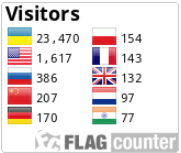METHODS OF PARALITURGICAL CHORAL COMPOSITIONS IN STUDENT CHOIR CLASSES
DOI:
https://doi.org/10.28925/2518-7635.2022.76Keywords:
dynamics, vocals, ensemble, phrasing, intonation, conductor, singingAbstract
The article focuses on revealing the methodology methods of paraliturgical choral compositions in student choir classes, namely, phonetic features of Church Slavonic hymns, nature of sound production, dynamic ensemble, vocal and timbre ensemble, and phrasing. The role of religious and spiritual culture, spiritual choral art is highlighted. The importance of spiritual choral music in the repertoire of the student choir is substantiated, and the system of Christian values is singled out. It was determined that currently, one of the urgent issues of art education is the revival of the spirituality of the nation, the search for new landmarks, a new system of values. The positive effect of spiritual singing on a person has been proven as well. It was determined that paraliturgical chants have a pedagogical and psychotherapeutic effect on the formation of personality, occupy an important place in the repertoire of student choirs. The interdisciplinary connections between the study of paraliturgical choral works and the subjects of the musical cycle are analysed, e.g., history of music, solfeggio, harmony, voice production, conducting. It was emphasized that in working on paraliturgical choral works, it is important for leaders of educational choral groups to master the special skills and abilities.
Choral singing is a carrier of enormous informational and educational potential, containing interdisciplinary communicative connections of the main subjects of the musical cycle: solfeggio, music theory, harmony, polyphony, history of music, analysis of musical forms, solo singing, conducting. The article examines the main problem in the work of choirmasters, namely, the lack of knowledge of the traditional style of sacred music, its genre affiliation, and stylistic features.
Downloads
References
Isaieva, O., Shainer, H. (2021). Humanitarnyi rozvytok studentiv yak skladova systemy vyshchoi osvity. [Humanitarian development of students as a component of the higher education system] Molod i rynok – Youth and the market, 10 (196), 58–62 [in Ukrainian].
Babichenko, N. O. (2017). Pochatkovi spetsializovani mystetski navchalni zaklady – osnova kulturno-muzychnoi ta kreatyvnoi industrii. Kulturni i kreatyvni industrii: istoriia, teoriia ta suchasni praktyky: proceedings of the International Scientific and Practical Conference. Kyiv: Natsionalna akademiia kerivnykh kadriv kultury i mystetstv, 7–9 [in Ukrainian].
Hiney, A. (2022). Reading the Romancero: A journey from the score to the sound with a non-professional choir. Psychology of Music, 50(4), 1238–1253. https://doi.org/10.1177/03057356211042081
Kaminska, M. (2018). Sakralne khorove mystetstvo yak odyn z chynnykiv formuvannia dukhovnosti studentiv. Molodyi vchenyi – A young scientist, 11 (63), 175–177 [in Ukrainian].
Kharyton, I. M. (2006). Fenomen dukhovnoi muzyky v ukrainskii pravoslavnii tradytsii. Extended abstract of candidate’s thesis. Kyiv [in Ukrainian].
Küssner, M.B., Taruffi, L., Floridou, G.A. (2022). Music and mental imagery, pp. 1-293. Routledge.https://www.routledge.com/Music-and-Mental-Imagery/Kussner-Taruffi-Floridou/p/book/9780367352165
Maiba, O. K. (2017). Vokalno-khorovyi spiv yak zasib formuvannia dukhovnykh tsinnostei u molodshykh shkoliariv. Mizhnarodni naukovo-praktychni chytannia pamiati Anatoliia Avdiievskoho: proceedings, 53–56 [in Ukrainian].
Mario, M. D. (2000). Vykhovannia molodi zasobamy pravoslavnoi dukhovnoi muzyky u zakladakh osvity Ukrainy (kinets KhIKh – pochatok KhKh stolittia). Extended abstract of candidate’s thesis. Kharkiv [in Ukrainian].
Medushevskyi, V. V. (2000). Pryslukhaytesya do anhelskoho spivu. Lyudstvo ta yoho kultura na porozi 2000-richchya Rizdva Khrystovoho. Pravoslavne Bratstvo v imya Arkhistratyha Mykhayla [in Ukrainian].
MacLachlan, H. (2020). Singing Out: GALA Choruses and Social Change. (pp. 1-256). DOI: 10.3998/mpub.11579619
Mospan, N. (2022). Teaching emotional English intonation. Continuing Professional Education: Theory and Practice, 2, 45–51. https://doi.org/10.28925/1609-8595.2022.2.5
Rakityanska, L. (2020). Future teacher’s emotional intelligence in spiritually-moral dimension. The Modern Higher Education Review, 4, 10-16. https://doi.org/10.28925/2518-7635.2019.4.1
Sonia, B. & Lotfi, B.A. (2016). The Importance of Prosody in a Proper English Pronunciation for EFL Learners. Arab World English Journal, 7(2), 316–327. https://dx.doi.org/10.24093/awej/vol7no2.21
Zheyuan, W. (2017). Intercultural education technology of students in extracurricular work by means of music. The Modern Higher Education Review, 1, 148-156. Retrieved from https://edreview.kubg.edu.ua/index.php/edreview/article/view/21
Zheyuan, W. (2018). Technology experimental implementation of intercultural education of students by music activities. The Modern Higher Education Review, 2. https://doi.org/10.28925/2518-7635.2017.2.18
Zhou, Zh. (2021). RETRACTED: The influence of choral practices and passive listening to music on creative thinking. Thinking Skills and Creativity, 42, Article 100972, https://doi.org/10.1016/j.tsc.2021.100972
Yagi, J. (2022). Achieving (a)synchrony through choral chanting: Co-operative corrections in taiko ensemble rehearsals, Journal of Pragmatics, 195, 48-68. https://doi.org/10.1016/j.pragma.2022.05.001
Published
How to Cite
Issue
Section
License
Copyright (c) 2023 The Modern Higher Education Review

This work is licensed under a Creative Commons Attribution-NonCommercial 4.0 International License.













